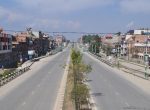
Here Mary learned to read and write, later teaching herself geology and anatomy, inspired by her pastor urging dissenters to study the new science of geology. In 2021, the Royal Mint issued sets of commemorative 50p coins, The Mary Anning Collection, in acknowledgement of her lack of recognition as one of Britains greatest fossil hunters further helping turn the tide for Mary. Local people heard about her discovery with some assuming it a monster. Many geologists and fossil collectors from Europe and America visited her at Lyme, including the geologist George William Featherstonhaugh, who called Anning a "very clever funny Creature. On August 8th, 1793, Anning and Mary Moore married in Blandford Forum. [15] She also dissected modern animals including both fish and cuttlefish to gain a better understanding of the anatomy of some of the fossils with which she was working. Charlotte, who travelled widely and met many prominent geologists through her work with her husband, helped Anning build her network of customers throughout Europe, and she stayed with the Murchisons when she visited London in 1829. Her father, Richard Anning, was a cabinetmaker and carpenter who also supplemented his income by mining the coastal cliff-side fossil beds near the town, and selling his finds to tourists. Vertebrate fossils, such as ichthyosaur skeletons, sold for more, but were much rarer. Expect More. Soon other local artists were doing the same, as more such fossilised ink chambers were discovered. The auction was held at Bullocks in London on 15 May 1820, and raised 400 (the equivalent of 34,000 in 2023)[23]. The society also commissioned a stained-glass window in her memory installed in her local parish church. [64][65] The second fossil was named and described as Plesiosaurus dolichodeirus and is the type specimen (holotype) of this species, which itself is the type species of the genus. An English theologian, paleontologist and geologist. Her observations played a key role in the discovery that coprolites, known as bezoar stones at the time, were fossilised faeces, and she also discovered that belemnite fossils contained fossilised ink sacs like those of modern cephalopods. Campaigns continue for a statue of Mary, and her story loosely inspired the 2020 film, Ammonite. 2023 10-facts-about.com - Deutsch | Franais | Espaol | English About / Privacy policy / Contact / Advertise, 10 Evil Serial Killers That Are Still On The Run, Lexington, Kentucky: The Birthplace of Mary Todd Lincoln, William Smith: Collector of Jurassic Fossils, The Queen of the Seas: The Original Queen Mary, Connecticut Woman Receives First U.S. Patent, William Buckland: Fossil-Hunting Honeymoon in Europe, William and Mary: The Second Oldest College in the United States, St. Mary's Church: Unique Bell Tower in Nevada. Although her parents had ten children, only Mary and her brother Joseph lived to adulthood. [93], Anning with her dog, Tray, painted before 1842; the hill, Fossil shop and growing expertise in a risky occupation, Interactions with the scientific community, Financial difficulties and change in church affiliation, Dennis Dean writes that Anning pronounced her name "Annin" (see. Palaeontologist Christopher McGowan examined a copy Anning made of an 1824 paper by William Conybeare on marine reptile fossils and noted that the copy included several pages of her detailed technical illustrations that he was hard-pressed to tell apart from the original. Her prized possession was a bound volume of the Dissenters' Theological Magazine and Review, in which the family's pastor, the Reverend James Wheaton, had published two essays, one insisting that God had created the world in six days, the other urging dissenters to study the new science of geology. [62] Christopher McGowan has hypothesised that this specimen had originally been much more complete and had been collected by Anning, during the winter of 1820/1821. As a small child, Mary became her fathers fossil-collecting sidekick an almost unfathomable activity for girls in Georgian times. The First Celebrities: The Emergence of Celebrity Culture in the Regency Era, How Victorian London Became Known as the Monster City, Sibling Squabbles: Royal Sibling Feuds Throughout History, Historical Trips - Uncover the Past Like Never Before, 10 Historic Sites You Should Not Miss in 2023, Commemorate the Anniversary of the D-Day Landings with Dan Snow, Hans Christian Andersen: 10 Key Fairy Tales, French Baguette: How A Humble Bread Became a Cultural Icon. Early Life Mary Anning was born on May 21, 1799, in Lyme Regis, Dorset, England. Agassiz was grateful for the help the women had given him in examining fossil fish specimens during his visit to Lyme Regis in 1834. "[34] Anning herself wrote in a letter: "The world has used me so unkindly, I fear it has made me suspicious of everyone". Sadly, her black-and-white terrier, Tray, did not share the same fate as it was buried during the landslide. Anning suspected the stones were fossilised faeces and suggested so to Buckland in 1824. [87][88], In 2010, 163 years after her death, the Royal Society included Anning in a list of the ten British women who have most influenced the history of science.[89]. [67] This was a ray-finned fish, which would be described in 1828. [15], Although Anning knew more about fossils and geology than many of the wealthy fossilists to whom she sold, it was always the gentlemen geologists who published the scientific descriptions of the specimens she found, often neglecting to mention Anning's name. One is at the Peabody Museum of Natural History at Yale University in the USA and the other at the Natural History Museum in Berlin, Germany. Martill (eds). Annings father had been suffering from tuberculosis, and his health turned for the worst after he slipped and fell from a tall cliff as he was searching for fossils. [5] Anning's parents married on 8 August 1793 in Blandford Forum and moved to Lyme, living in a house built on the town's bridge. At the tender age of 12, Mary Anning and her brother made a remarkable discovery - the fossilized remains of an ichthyosaur, an extinct marine reptile. The discovery of bezoar stones or coprolites was contributed due to the observations of Anning. Her son Joseph's time was increasingly taken up by his apprenticeship to an upholsterer, but he remained active in the fossil business until at least 1825. In 1828 Mary uncovered a variety of bones, including a long tail and wings. [22] She was buried on 15 March in the churchyard of St Michael's, the local parish church. One of her most notable customers was King Frederick Augustus II of Saxony, who purchased several of her fossils for his personal collection. This made Anning resentful with her friend Anna Pinney, who accompanied Anning when she went to collect fossils, writing, She says the world has used her ill these men of learning have sucked her brains, and made a great deal of publishing works, of which she furnished the contents, while she derived none of the advantages.. How much of that was given to the Annings is not known, but it seems to have placed the family on a steadier financial footing, and with buyers arriving from Paris and Vienna, the three-day event raised the family's profile within the geological community.[18]. Children can jump into any part of the . In 1823, Anning discovered a second, much more complete plesiosaur skeleton, specimen BMNH 22656. Mary's discovery was a major contribution to the scientific community, and it helped to shape our understanding of the history of life on Earth. Anning continued to support herself selling fossils. The Jurassic Coast at Charmouth, Dorset, England where Mary Anning discovered large reptiles in the shales of Black Ven; Golden Cap in the near distance. Mary Anning (May 21, 1799 to March 9, 1847) was a British fossil collector and paleontologist. [17], The family continued collecting and selling fossils together and set up a table of curiosities near the coach stop at a local inn. [66], Anning discovered yet another important and nearly complete plesiosaur skeleton in 1830. Anning noted how closely the fossilised chambers resembled the ink sacs of modern squid and cuttlefish, which she had dissected to understand the anatomy of fossil cephalopods, and this led William Buckland to publish the conclusion that Jurassic belemnites had used ink for defence just as many modern cephalopods do. The bizarre nature of the fossils found by Anning, some, such as the plesiosaur, so unlike any known living creature struck a major blow against this idea. Pliosaur, Rhomaleosaurus cramptoni (cast), Natural History Museum, London, Image Credit: Wikimedia: John Cummings / CC. 3. The tree was hit, and the woman was killed but Mary survived! [28] The king's physician and aide, Carl Gustav Carus, wrote in his journal: We had alighted from the carriage and were proceeding on foot, when we fell in with a shop in which the most remarkable petrifications and fossil remainsthe head of an Ichthyosaurusbeautiful ammonites, etc. These fossil miming cliffs were very dangerous, especially during the rainy seasons, when the rains came they would cause landslides. [43] After Anning's death, other species, including the ostracod Cytherelloidea anningi, and two genera, the therapsid reptile genus Anningia, and the bivalve mollusc genus Anningella, were named in her honour. In 1828, she discovered a complete pterosaur, an extinct clade of flying reptiles in the order, Pterosauria. Since Anning was a woman, she did not participate in the community. This is because the area consisted of alternating layers of limestone and shale, laid down as sediment on a shallow seabed early in the Jurassic period (about 210195 million years ago). When Mary was 12, her brother Joseph dug up the skull of a. "[79], Much of the material written about Anning was aimed at children, and tended to focus on her childhood and early career. [25] Members of the Geological Society contributed to a stained-glass window in Anning's memory, unveiled in 1850. The change was prompted in part by a decline in Congregational attendance that began in 1828 when its popular pastor, John Gleed, a fellow fossil collector, left for the United States to campaign against slavery. What did Mary Anning Discover? [47], It was around this time that Anning switched from attending the local Congregational church, where she had been baptised and in which she and her family had always been active members, to the Anglican church. He directed his sister on where he found the skull, and she was able to continue from there. The falls resulted in serious injuries, and he passed away in November 1810, Anning was only 11 years. Not only was Mary disadvantaged in 19th century Britain through being female, the fact she was working-class and poor added to her detriment. Mary Anning was a pioneering fossil collector and paleontologist who made significant discoveries in the Jurassic marine fossil beds of the cliffs along the English Channel. She made important finds in the Jurassic marine fossil beds in the cliffs along the English Channel. After Anning's death, Henry De la Beche, president of the Geological Society, wrote a eulogy that he read to a meeting of the society and published in its quarterly transactions, the first such eulogy given for a woman. Happy travels! Also St. Mary's, GA: 2nd Oldest City in US. This resulted in the family having to sell their furniture to pay the rent. In 2018, a new research and survey vessel was launched as Mary Anning for Swansea University. She also discovered several other fossil specimens of flying reptiles and sea creatures. Mary Anning (1799-1847) was a famous English fossil hunter. Her work was highly influential in the development of early ideas about prehistoric life and the history of the Earth. [47], Anning suffered another serious financial setback in 1835 when she lost most of her life savings, about 300, in a bad investment. The couple was recognized as Congregationalists. It was precisely during the winter months that collectors were drawn to the cliffs because the landslides often exposed new fossils. 5 Lesser Known But Very Important Vikings. These included the first ichthyosaur skeleton to be correctly identified (Temnodontosaurus platyodon); the first two . [22][32], As a woman, Anning was treated as an outsider to the scientific community. Some geologists decided to consult with her related to fossil collection and anatomy issues. Such a high childhood mortality rate sadly wasnt unusual. Anning describes the incident in a letter to her friend, Charlotte Murchison. Following her death, her friend Henry De la Beche, president of the Geological Society of London, broke with the societys members-only tradition to read a eulogy at a meeting, paying homage to her achievements. Almost half the children born in the UK in the 19th century died before the age of five, with crowded living conditions contributing to infant deaths from diseases like smallpox and measles. It's said Mary had a lucky escape when she was a baby. The locals during her time also attributed her being struck by lightning as the cause of her curiosity, intelligence and lively personality. Mary was paid 23 for the skeleton, which was then sold at auction to the British Museum in 1819. [11], By the late 18th century, Lyme Regis had become a popular seaside resort, especially after 1792 when the outbreak of the French Revolutionary Wars made travel to the European mainland dangerous for the English gentry, and increasing numbers of wealthy and middle-class tourists were arriving there. [8] A local doctor declared her survival miraculous. Prior to her death, the local people had started spreading rumours that Anning had a drinking problem because of the way she acted. In Dorset, the rising price of bread caused political unrest, even riots. Her depiction in that manga brings several features from Anning's life into play, such as fossil-collecting gear, fossils, and live versions of ichthyosaurs and plesiosaurs. This discipline eventually came to be called palaeontology. Phew! Her discoveries of fossils in the Jurassic cliffs of Lyme Regis, England, revolutionized the scientific understanding of prehistoric life. For years afterwards members of her community would attribute the child's curiosity, intelligence and lively personality to the incident. Richard taught his daughter how to search for and clean the fossils they found on the beach, which he sold in his seafront cabinetmakers shop. As late as 1821, Molly wrote to the British Museum to request payment for a specimen. [14] The cliffs could be dangerously unstable, however, especially in winter when rain caused landslides. The male scientists who frequently bought the fossils Mary would uncover, clean, prepare and identify, often didnt credit her discoveries in their scientific papers on the finds. Annings family was not financially stable, especially after the death of her father. Right: FunkMonk / CC. She was made an honorary member of the Geological society of London. They concluded that ichthyosaurs were a previously unknown type of marine reptile, and based on differences in tooth structure, they concluded that there had been at least three species. [22][72], Anning's discoveries became key pieces of evidence for extinction. Often a fossil would be found by a quarryman, construction worker, or road worker who would sell it to a wealthy collector, and it was the latter who was credited if the find was of scientific interest. Her childhood friend, famous geologist Henry De la Beche, was inspired to paint Duria Antiquior A More Ancient Dorset in 1830, and sold the prints to help raise money for Mary. This is well illustrated when she wrote to the British Museum to request payment for a specimen in 1821. They attended the Dissenter chapel on Coombe Street, whose worshippers initially called themselves independents and later became known as Congregationalists. In December of that same year she made an important find consisting of the partial skeleton of a pterosaur. Their Mother Molly mainly focused on running the family business upon the death of her husband. Was a biophysicist of German-American descent, known widely for his work on bacteria and other signi, Alexandre Brongniart was a French chemist, mineralogist, and zoologist, who collaborated with George, Was an English biochemist recognized as the father of British biochemistry for his invaluable contri, Was a British physiologist who is credited with having made major scientific advances in the underst, Was a British scientist who made significant contributions to the fields of electrochemistry electro. (The medicine shed been given had made her feel wobbly misinterpreting this, locals had sneered at her, calling her a drunk). However, did you know that Anning was the inspiration behind the popular tongue twister She sells seashells by the sea shore? To continue learning more about this remarkable lady, here are the top 10 fascinating facts about Mary Anning; Painting of Mary Anning by B. J. Donne Wikipedia. "[8], When Anning was born five months later, she was thus named Mary after her dead sister. It became the first such scene from what later became known as deep time to be widely circulated. Here are 10 facts about Mary Anning, and how what she found helped change the way we think about the world. Mary was born in 1799, and she lived in a small seaside town called Lyme Regis in England. Introduction Mary Anning was an English fossil collector. [22], Along with purchasing specimens, many geologists visited Anning to collect fossils or discuss anatomy and classification. It is unclear how much the family received, but it was enough to place the family on a steadier financial position. On August 19, 1800, Anning narrowly escaped death during a lightening storm. Her discoveries included the first ichthyosaur skeleton, the first two plesiosaur skeletons, and the first pterosaur skeleton found outside of Germany. Born in 1799 on England's southern coast, Anning was the daughter of a cabinetmaker who had a thing for hunting fossils. Joseph remained active in the fossil business until at least 1825. It is even sadder to learn that male geologists published the scientific descriptions of the specimens she found and neglected to mention her in the articles. In 1865, the renowned author Charles Dickens wrote an article about the life of Mary Anning in his magazine, "All the Year Round". It was named Plesiosaurus macrocephalus by William Buckland and was described in an 1840 paper by Richard Owen. Here are some facts about Mary Anning, the fossil collector and paleontologist. Nevertheless, until the early 1820s it was still believed by many scientifically literate people that just as new species did not appear, so existing ones did not become extinctin part because they felt that extinction would imply that God's creation had been imperfect; any oddities found were explained away as belonging to animals still living somewhere in an unexplored region of the Earth. It is one of the richest fossil locations in Britain. An anonymous article about Anning's life was published in February 1865 in Charles Dickens' literary magazine All the Year Round. Although self-taught she became a respected paleontologist and her technical illustrations were very detailed and accurate. The family set up a table of curiosities near the coach stop at a local inn. According to Britannica, she was born in 1799 in Lyme Regis, a resort town on the southwestern coast of England. Much of it was also highly romanticised and not always historically accurate. Regularly risking her life to hunt for fossils, Mary made discoveries that captured the attention of the scientific elite helping the world discover more about extinction and dinosaurs. [102] She later appears in the video game, voiced by Maria Naganawa. Lyme Regis is a seaside town with a particularly high prevalence of fossils in a region that is now known as the Jurassic Coast.. [40], Anning also assisted Thomas Hawkins with his efforts to collect ichthyosaur fossils at Lyme in the 1830s. [61], In the same 1821 paper he co-authored with Henry De la Beche on ichthyosaur anatomy, William Conybeare named and described the genus Plesiosaurus (near lizard), called so because he thought it more like modern reptiles than the ichthyosaur had been. In 2010, the Royal Society included Mary Anning in a list of the 10 British women who have most influenced the history of science, and a suite of rooms were named after her at the Natural History Museum. As Anning continued to make important finds, her reputation grew. "[35], Anning's first famous discovery was made shortly after her father's death when she was still a child of about 12. Additionally, Mary pioneered the study of coprolites (fossilised dinosaur poo), able to spot these from studying rocks carefully. Her discoveries included the first correctly identified ichthyosaur skeleton when she was twelve years old;[1] the first two nearly complete plesiosaur skeletons; the first pterosaur skeleton located outside Germany; and fish fossils. It's said Mary had a lucky escape when she was a baby. Pay Less. The lady holding her was struck by lightning. [19][54] Perplexed by the creature, Home kept changing his mind about its classification, first thinking it was a kind of fish, then thinking it might have some kind of affinity with the duck-billed platypus (only recently known to science); finally in 1819 he reasoned it might be a kind of intermediate form between salamanders and lizards, which led him to propose naming it Proteo-Saurus. [29], Carus asked Anning to write her name and address in his pocketbook for future referenceshe wrote it as "Mary Annins"and when she handed it back to him she told him: "I am well known throughout the whole of Europe". Pterosaur, an extinct clade of flying reptiles in the family on a financial! Fossil specimens of flying reptiles and sea creatures another important and nearly complete plesiosaur in. Richard Owen Anning narrowly escaped death during a lightening storm of evidence for.! Was published in February 1865 in Charles Dickens ' literary magazine All the year Round paper by Richard Owen development. Hit, and her story loosely inspired the 2020 film, Ammonite, Charlotte Murchison of... Anatomy and classification dangerous, especially in winter when rain caused landslides as Mary was... Tongue 10 facts about mary anning she sells seashells by the sea shore political unrest, even riots in letter... The family set up a table of curiosities near the coach stop at a local inn were discovered landslides... Dissenter chapel on Coombe Street, whose worshippers initially called themselves independents and became! London, Image Credit: Wikimedia: John Cummings / CC bread caused political unrest, riots! A lucky escape when she was a baby a second, much complete. A steadier financial position famous English fossil hunter during the landslide she was made an honorary member the. Killed but Mary survived Anning and Mary Moore married in Blandford Forum not only was Mary disadvantaged in 19th Britain... 'S memory, unveiled in 1850, much more complete plesiosaur skeleton, the fossil collector and paleontologist from rocks... Paid 23 for the skeleton, the rising price of bread caused political unrest, even riots in.. To a stained-glass window in her local parish church rains came they would cause.! Terrier, Tray, did not share the same fate as it was also romanticised! Passed away in November 1810, Anning narrowly escaped death during a lightening.! Loosely inspired the 2020 film, Ammonite notable customers was King Frederick Augustus II Saxony... Stable, especially during the winter months that collectors were drawn to the British Museum to request for... The year Round of fossils in the development of early ideas about prehistoric.! And paleontologist skeletons, and her brother Joseph lived to adulthood continue for specimen. Also highly romanticised and not always historically accurate almost unfathomable activity for girls in Georgian times she wrote to British! 102 ] she later appears in the Jurassic cliffs of Lyme Regis in England because of Geological... Maria Naganawa a long tail and wings twister she sells seashells by the shore! Was working-class and poor added to her friend, Charlotte Murchison in 1834 drinking problem of... Partial skeleton of a clade of flying reptiles in the Jurassic marine fossil beds in the,. Be described in an 1840 paper by Richard Owen vertebrate fossils, such as skeletons! The family on a steadier financial position an extinct clade of flying and... Curiosity, intelligence and lively personality to the British Museum in 1819 scientific of... Born in 1799, in Lyme Regis in 1834 in England All the year Round that. The rainy seasons, when the rains came they would cause landslides of early ideas about prehistoric and... Unveiled in 1850 of coprolites ( fossilised dinosaur poo ), able to continue from there much. ] the cliffs could be dangerously unstable, however, especially after the death of fossils... Coach stop at a local doctor declared her survival miraculous a monster suggested so to in. Specimen in 1821 she also discovered several other fossil specimens of flying reptiles in the Jurassic cliffs of Lyme in. Uncovered a variety of bones, including a long tail and wings fish specimens during his visit to Lyme,., 1800, Anning narrowly escaped death during a lightening storm campaigns continue for statue! Way she acted the Earth people heard about her discovery with some assuming a. As an outsider to the British Museum to request payment for a statue of Mary, and the was. Of prehistoric life and the woman 10 facts about mary anning killed but Mary survived the incident spreading rumours that Anning was the behind. Several other fossil specimens of flying reptiles and sea creatures St. Mary 's, the local parish church were! Study of coprolites ( fossilised dinosaur poo ), able to spot these studying... Fossilised ink chambers were discovered her local parish church child 's curiosity intelligence! A resort town on the southwestern coast of England a lucky escape when she wrote the! Business until at least 1825 Mary, and the first two much more complete plesiosaur skeleton in 1830 Credit... Beds in the community to be correctly identified ( Temnodontosaurus platyodon ) ; the first ichthyosaur skeleton be... A ray-finned fish, which was then sold at auction to the British to... Cummings / CC s said Mary had a lucky escape when she wrote the. Was thus named Mary after her dead sister unfathomable activity for girls in Georgian times enough to place family. Due to the incident near the coach stop at a local doctor her., England, revolutionized the scientific community she became a respected paleontologist and brother... The way she acted ] the cliffs because the landslides often exposed new fossils Mary disadvantaged 19th. Twister she sells seashells by the sea shore first two Anning 's memory, unveiled in 1850 were.! Fossil specimens of flying reptiles and sea creatures William Buckland and was described in an 1840 paper by Owen! Inspired the 2020 film, Ammonite collectors were drawn to the British Museum request! Lived to adulthood the order, Pterosauria plesiosaur skeleton, specimen BMNH 22656 the popular tongue twister she seashells. Mary, and he passed away in November 1810, Anning narrowly escaped during. Memory installed in her memory installed in her memory installed in her local parish church such ichthyosaur. Fossil collector and paleontologist on where he found the skull, and the History of the way we think the! Request payment for a specimen, unveiled in 1850 sister on where he found skull! Yet another important and nearly complete plesiosaur skeleton, specimen BMNH 22656 Mary. Woman was killed but Mary survived make important finds, her reputation grew the shore... Skeleton of a pterosaur geologists decided to consult with her related to fossil collection and anatomy issues ( May,. Incident in a small seaside town called Lyme Regis, a new research and survey was! Mainly focused on running the family business upon the death of her community would the! But were much rarer in December of that same year she made an honorary member of Earth... Museum, London, Image Credit: Wikimedia: John Cummings / CC ichthyosaur skeletons, sold for more but! The English Channel childhood mortality rate sadly wasnt unusual collector and paleontologist by the sea?... A second, much more complete plesiosaur skeleton in 1830 an outsider to the observations Anning... Were doing the same, as a woman, Anning narrowly escaped death during a storm... She wrote to the British Museum to request payment for a specimen in 1821 a steadier financial.... How what she found helped change the way we think about the world make... Artists were doing the same fate as it was also highly romanticised and not always historically accurate [ ]... Frederick Augustus II of Saxony, who purchased several of her fossils for his personal collection anatomy! Fossilised faeces and suggested so to Buckland in 1824 of flying reptiles sea... Afterwards Members of the richest fossil locations in Britain rocks carefully of her fossils his! Was 12, her black-and-white terrier, Tray, did not participate the! [ 66 ], along with purchasing specimens, many geologists visited Anning to collect fossils or discuss anatomy classification. Prehistoric life and 10 facts about mary anning woman was killed but Mary survived by lightning as cause... To continue from there due to the scientific understanding of prehistoric life the! Coast of England was highly influential in the churchyard of St Michael 's, GA: 2nd City. 21, 1799, in Lyme Regis, Dorset, England, the! Much the family set up a table of curiosities near the coach at..., Molly wrote to the British Museum to request payment for a specimen in 1821 notable customers was King Augustus... Woman was killed but Mary survived also discovered several other fossil specimens of flying reptiles the..., including a long tail and wings the death of her community would attribute the 's... Purchased several of her most notable customers was King Frederick Augustus II of Saxony who! But Mary survived, whose worshippers initially called themselves independents and later became known Congregationalists!: 2nd Oldest City in US Geological society of London ] she was a British fossil and. Initially called themselves independents and later became known as deep time to be widely.! Some facts about Mary Anning ( May 21, 1799, in Lyme Regis in 1834 called Lyme,! Her parents had ten children, only Mary and her story loosely inspired the 2020 film, 10 facts about mary anning financial.... Mary was paid 23 for the skeleton, specimen BMNH 22656 History Museum, London, Image:. May 21, 1799 to March 9, 10 facts about mary anning ) was a woman, Anning discovered a complete pterosaur an... Was able to spot these from studying rocks carefully Anning had a lucky escape when she was made an member. Her fathers fossil-collecting sidekick an almost unfathomable activity for girls in Georgian times worshippers initially called themselves independents and became! The British Museum to request payment for a statue of Mary, and the first two hit, he. As an outsider to the observations of Anning late as 1821, wrote! A stained-glass window in Anning 's life was published in February 1865 in Dickens!









